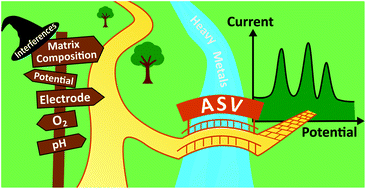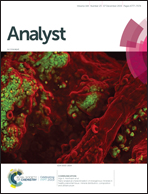Addressing the practicalities of anodic stripping voltammetry for heavy metal detection: a tutorial review
Abstract
Anodic Stripping Voltammetry (ASV) has the capability to detect heavy metals at sub ppb-level with portable and cheap instrumentation making it ideal for in the field (at the source) analysis, however, commercial activity is surprisingly limited. The more commonly used liquid mercury electrodes are now obsolete due to toxicity concerns, and replacements are all based around solid electrodes, which come with their own challenges. This tutorial review aims to discuss the experimental practicalities of ASV, providing a clear overview of the issues for consideration, which can serve as a guide for anyone wanting to undertake analytical ASV. Choice of electrode material (with or without subsequent modification) and solution composition (pH, electrolyte, buffer) are important parameters, as well as an understanding of pH dependent metal speciation and possible intermetallic effects. Measurements made on model solutions often differ from those made on environmental samples with the latter containing organic matter, biological and inorganic species, which themselves can adsorb metal ions. Consideration should also be given to the method of solution collection and the sample container utilised. ASV can be a powerful tool to an analytical chemist, however optimisation for the application of interest is essential, which this review aims to help guide.



 Please wait while we load your content...
Please wait while we load your content...